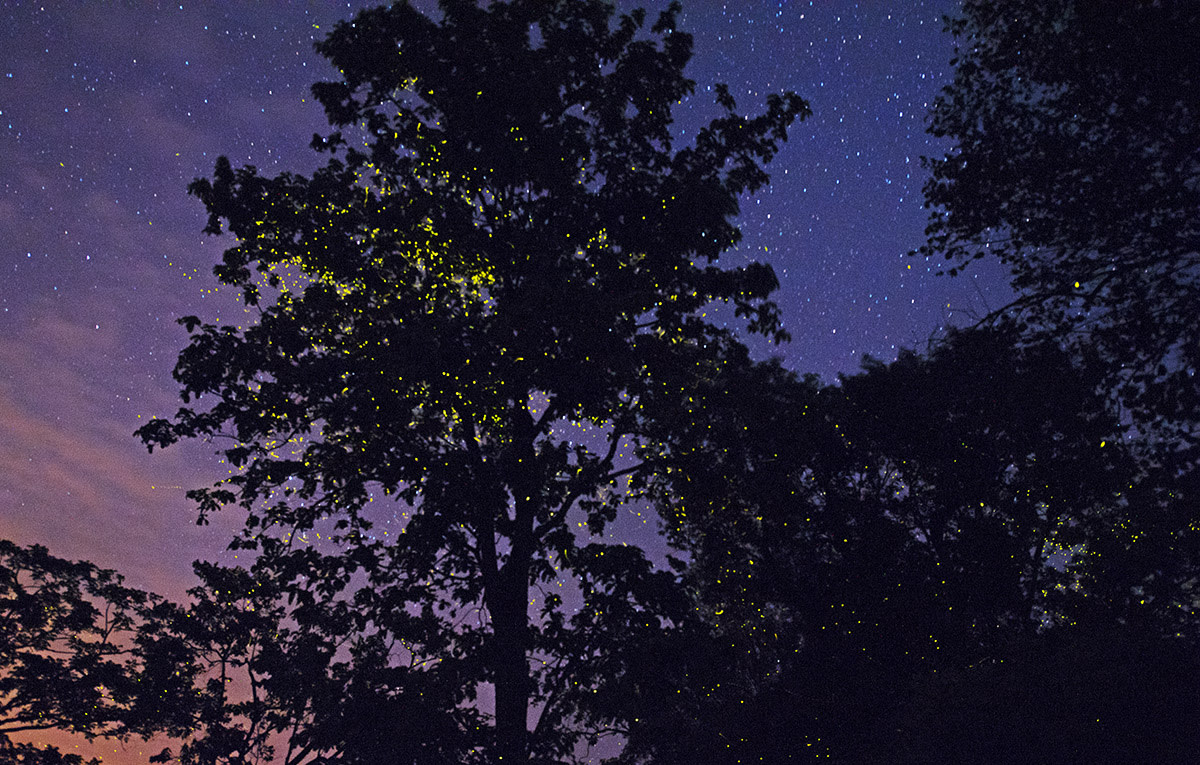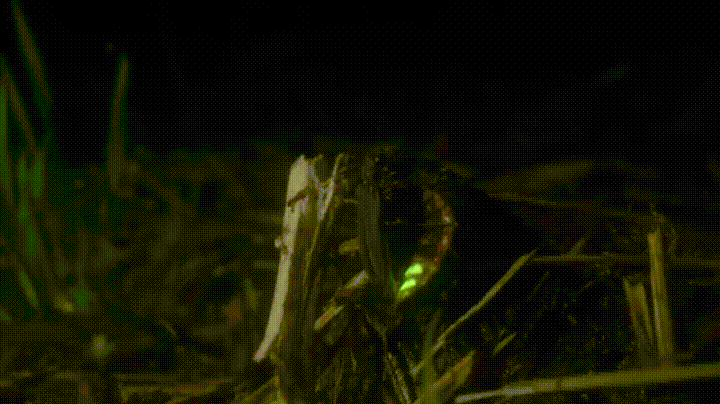 Listen to this article
•
15:34 min
Listen to this article
•
15:34 min
The appeal of fireflies or glow-worms is eternal. It doesn’t matter where you spot one — deep in the jungle or by the jungle gym in a city park — it is always a stirring experience. It is a miniature miracle of sorts that captivates our attention and hushes the mind. And it is kind of miraculous, this ability to create light from seemingly nothing, even on the darkest of nights.
But how does it actually happen?
Fireflies, like bioluminescent species of fungus and marine life, owe their glow to a chemical called luciferin, which they have in cells in their abdomen. When the luciferin interacts with oxygen, a light is emitted, causing the belly of the firefly to glow. What’s more, this “light is 99 per cent efficient,” explains naturalist Shardul Bajikar in the article, In Search of Those Fantastic Fireflies. What that means is “that for every 100 units of energy used, 99 units turn to light.” LED lights in comparison, are about 50 per cent efficient.

Cover Photo: Fireflies light up the trees in Kanger Ghati National Park, in Chhattisgarh. Fireflies are also called lightning bugs, and in Hindi jugnu. Cover Photo: Dhritiman Mukherjee
There are over 2,000 known species of fireflies in the world, and each one glows with a signature rhythm. They use their flashes of bioluminescence like Morse code, to communicate with members of the opposite sex. The display is especially enthralling during mating season, just before the monsoon, when thousands of fireflies light up the night. Males fly around treetops and riverbeds, abdomens aglow, while females generally perch on leaves, and signal only when they spot an attractive partner. The exchange continues, the insects get closer, and if all goes well, the night ends in mating.
Luciferins are not the only chemicals in the fireflies’ arsenal. They also produce defensive steroids called lucibufagins — similar to the toxins exuded by certain frogs — that are toxic and distasteful. This helps fireflies with predators, and the reason that nocturnal birds and toads steer clear of them, even though they are easy to spot.
Interestingly, some species of female fireflies have been observed mimicking the light patterns of other species after they have mated. When the amorous male approaches, the female promptly consumes him, and uses the lucibufagins (defensive chemicals) in his body to bolster her own security system.
India has about eight known species of fireflies that inhabit humid forests in many parts of the country, most notably the Western Ghats. Observing them during mating season is an unforgettable sight, one that many nature lovers are keen to experience. If and when you do witness the spectacle, here are a few things to keep in mind: Seek out operators that are mindful of their impact on the habitat (don’t be afraid to ask questions). Avoid artificial light, insect repellents, deodorants, and loud music as they interfere with the fireflies’ communication methods and breeding cycle. And do not, under any circumstances, attempt to capture the glow bugs, even if you intend on setting it free later. There are a number of ways to tread lightly, and they all begin with putting the firefly first.





